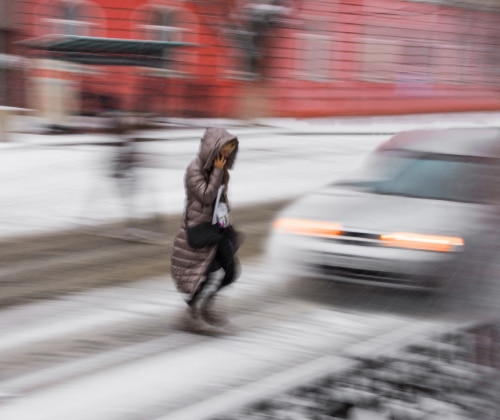Have you been involved in an accident with a moving vehicle while you were a pedestrian? Pedestrian/automobile accidents are very dangerous and often result in injuries that require compensation. But one key element you must resolve before you can get that compensation is to determine who is at fault.
Fault in this type of accident can be trickier than many people realize. To help you determine where the fault lies in your situation, discover the four basic types of fault. If you’ve been injured in New York, schedule a free consultation with a dedicated Queens injury attorney at Shaevitz & Shaevitz law offices today.
1. The Driver Is at Fault
 One of the most common scenarios for an auto/pedestrian collision is that the pedestrian acted in accordance with traffic laws but the vehicle did not. You may have been on the sidewalk when a drunk driver veered off the road or crossed with the light in a crosswalk when someone ran the red light.
One of the most common scenarios for an auto/pedestrian collision is that the pedestrian acted in accordance with traffic laws but the vehicle did not. You may have been on the sidewalk when a drunk driver veered off the road or crossed with the light in a crosswalk when someone ran the red light.
Drivers generally are considered to have a higher duty of care. This duty of care is the responsibility of each person to act with reasonable prudence toward others and not endanger them. Since cars are larger, faster, and more dangerous, drivers are expected to act more cautiously toward others. So a driver must generally prove that he or she is not, in fact, at fault rather than being assumed innocent.
2. The Pedestrian Is at Fault
Of course, drivers are not the only ones who can be at fault for an accident. Pedestrians can also cause problems if they act recklessly. If you crossed against a red light, for example, or jaywalked, you may be deemed to be the cause of the accident.
Because of the higher duty of care that drivers have, the driver usually must be able to prove that they did violate any law of the road and responded at least as well as a reasonable person would in the same situation. So even if a pedestrian crossed against the light, they may not be considered primarily at fault if the driver failed to look or speeded.
3. A Third Party Is at Fault
While this is rarer, a third party could also be at fault for what happened between you and a driver. Third-party fault is harder to determine but can be very important in order to prevent other accidents.
How might this happen? A city agency may be at fault if unkempt bushes created a blind spot where drivers and pedestrians couldn’t see each other well. A construction company may be at fault if pedestrians were diverted too close to traffic or if signage was unclear. A driver who texted and hit a car who then hit a pedestrian may be at fault even if they did not physically strike the pedestrian.
4. Both Parties Are at Fault
Many times, both parties have at least a little responsibility for an accident. This is known as comparative responsibility and is often determined to be a percentage. If you crossed outside a pedestrian crosswalk, for instance, but the driver failed to notice you, both bear some responsibility. A jury may find that the pedestrian bears 25% of the fault while the driver bears 75%.
The percentage of responsibility affects how you can sue for compensation and what you may receive. If you bear 25% of the fault, you may see damages reduced by that amount. If you bear a higher percentage of responsibility than the other party, you may not be able to sue for compensation at all, depending on your state.
Finding legal fault in your particular accident is a necessary first step that will affect all your future decisions about your case. But it can also be harder to judge than you may at first think. Your best course of action is to meet with an experienced Queens personal injury attorney today. Shaevitz & Shaevitz Law Offices can help. Call today to discuss your pedestrian accident case and learn what to do next.
